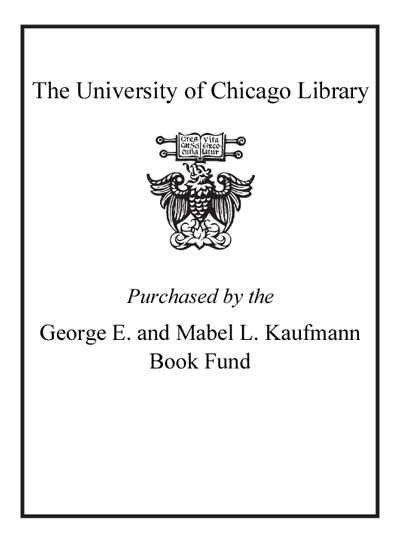Principles of nucleic acid structure /
Saved in:
| Author / Creator: | Neidle, Stephen. |
|---|---|
| Edition: | First edition. |
| Imprint: | Amsterdam : Elsevier ; Boston : Academic Press, 2008. |
| Description: | xii, 289 p. : ill. ; 26 cm. |
| Language: | English |
| Subject: | |
| Format: | Print Book |
| URL for this record: | http://pi.lib.uchicago.edu/1001/cat/bib/6659562 |
Table of Contents:
- 1. Methods for Studying Nucleic Acid Structure
- 1.1. Introduction
- 1.2. X-ray Diffraction Methods for Structural Analysis
- 1.2.1. Overview
- 1.2.2. Fiber Diffraction Methods
- 1.2.3. Single-Crystal Methods
- 1.3. NMR Methods for Studying Nucleic Acid Structure and Dynamics
- 1.4. Molecular Modelling and Simulation of Nucleic Acids
- 1.5. Chemical, Enzymatic, and Biophysical Probes of Structure and Dynamics
- 1.6. Sources of Structural Data
- 1.7. Visualization of Nucleic Acid Molecular Structures
- 1.7.1. The Structures in This Book
- 2. The Building-Blocks of DNA and RNA
- 2.1. Introduction
- 2.2. Base Pairing
- 2.3. Base and Base Pair Flexibility
- 2.4. Sugar Puckers
- 2.5. Conformations About the Glycosidic Bond
- 2.6. The Backbone Torsion Angles and Correlated Flexibility
- 3. DNA Structure as Observed in Fibers and Crystals
- 3.1. Structural Fundamentals
- 3.1.1. Helical Parameters
- 3.1.2. Base-Pair Morphological Features
- 3.2. Polynucleotide Structures from Fiber Diffraction Studies
- 3.2.1. Classic DNA Structures
- 3.2.2. DNA Polymorphism in Fibers
- 3.3. B-DNA Oligonucleotide Structure as Seen in Crystallographic Analyses
- 3.3.1. The Dickerson-Drew Dodecamer
- 3.3.2. Other Studies of the Dickerson-Drew Dodecamer
- 3.3.3. Other B-DNA Oligonucleotide Structures
- 3.3.4. Sequence-Dependent Features of B-DNA: Their Occurrence and Their Prediction
- 3.4. A-DNA Oligonucleotide Crystal Structures
- 3.4.1. A-Form Octanucleotides
- 3.4.2. Do A-Form Oligonucleotides Occur in Solution? Crystal-Packing Effects
- 3.4.3. The A [left and right arrow] B Transition in Crystals
- 3.5. Z-DNA - Left-Handed DNA
- 3.5.1. The Z'DNA Hexanucleotide Crystal Structure
- 3.5.2. Overall Structural Features
- 3.5.3. The Z-DNA Helix
- 3.5.4. Other Z-DNA Structures
- 3.5.5. Biological Aspects of Z-DNA
- 3.6. Bent DNA
- 3.6.1. DNA Periodicity in Solution
- 3.6.2. A-Tracts and Bending
- 3.6.3. Structures Showing Bending
- 3.6.4. The Structure of Poly dA[middot]dT
- 3.7. Concluding Remarks
- 4. Nonstandard and Higher-Order DNA Structures: DNA-DNA Recognition
- 4.1. Mismatches in DNA
- 4.1.1. General Features
- 4.1.2. Purine: Purine Mismatches
- 4.1.3. Alkylation Mismatches
- 4.2. DNA Triple Helices
- 4.2.1. Introduction
- 4.2.2. Structural Studies
- 4.2.3. Antiparallel Triplexes and Nonstandard Base-pairings
- 4.2.4. Triplex Applications
- 4.3. Guanine Quadruplexes
- 4.3.1. Introduction
- 4.3.2. Overall Structural Features of Quadruplex DNA
- 4.3.3. Examples of Simple Quadruplex Structures
- 4.3.4. Some Complex Quadruplex Structures
- 4.3.5. The i-Motif
- 4.4. DNA Junctions
- 4.4.1. Holliday Junction Structures
- 4.4.2. DNA Enzyme Structures
- 4.5. Unnatural DNA Structures
- 5. Principles of Small Molecule-DNA Recognition
- 5.1. Introduction
- 5.2. DNA-Water Interactions
- 5.2.1. Hydration in the Grooves in Detail
- 5.3. General Features of DNA-Drug and Small-Molecule Recognition
- 5.4. Intercalative Binding
- 5.4.1. Simple Intercalators
- 5.4.2. Complex Intercalators
- 5.4.3. Major-Groove Intercalation
- 5.4.4. Bis-Intercalators
- 5.5. Intercalative-Type Binding to Higher-Order DNAs
- 5.5.1. Triplex DNA-Ligand Interactions
- 5.5.2. Ligand Binding to Quadruplex DNAs
- 5.5.3. Ligand Binding to Junction DNAs
- 5.6. Groove-Binding Molecules
- 5.6.1. Simple Groove Binding Molecules
- 5.6.2. Netropsin and Distamycin
- 5.6.3. Sequence-Specific Polyamides
- 5.7. Small Molecule Covalent Bonding to DNA
- 5.7.1. The Platinum Drugs
- 5.7.2. Covalent-Binding Combined with Sequence-Specific Recognition
- 6. RNA Structures and Their Diversity
- 6.1. Introduction
- 6.2. Fundamentals of RNA Structure
- 6.2.1. Helical RNA Conformations
- 6.2.2. Mismatched and Bulged RNA Structures
- 6.3. Transfer RNA Structures
- 6.4. Ribozymes
- 6.4.1. The Hammerhead Ribozyme
- 6.4.2. Complex Ribozymes
- 6.5. Riboswitches
- 6.6. The Ribosome, a Ribozyme Machine
- 6.6.1. The Structure of the 30S Subunit
- 6.6.2. The Structure of the 50S subunit
- 6.6.3. Complete Ribosome Structures
- 6.7. RNA-Drug Complexes
- 6.8. RNA Motifs
- 7. Principles of Protein-DNA Recognition
- 7.1. Introduction
- 7.2. Direct Protein-DNA Contacts
- 7.3. Major-Groove Interactions - the [alpha]-Helix as the Recognition Element
- 7.4. Zinc-Finger Recognition Modes
- 7.5. Other Major Groove Recognition Motifs
- 7.6. Minor-Groove Recognition
- 7.6.1. Recognition of B-DNA
- 7.6.2. The Opening-up of the Minor Groove by TBP
- 7.6.3. Other Proteins that Induce Bending of DNA
- 7.7. DNA-Bending and Protein Recognition
- 7.8. Protein-DNA-Smail Molecule Recognition
- Index


